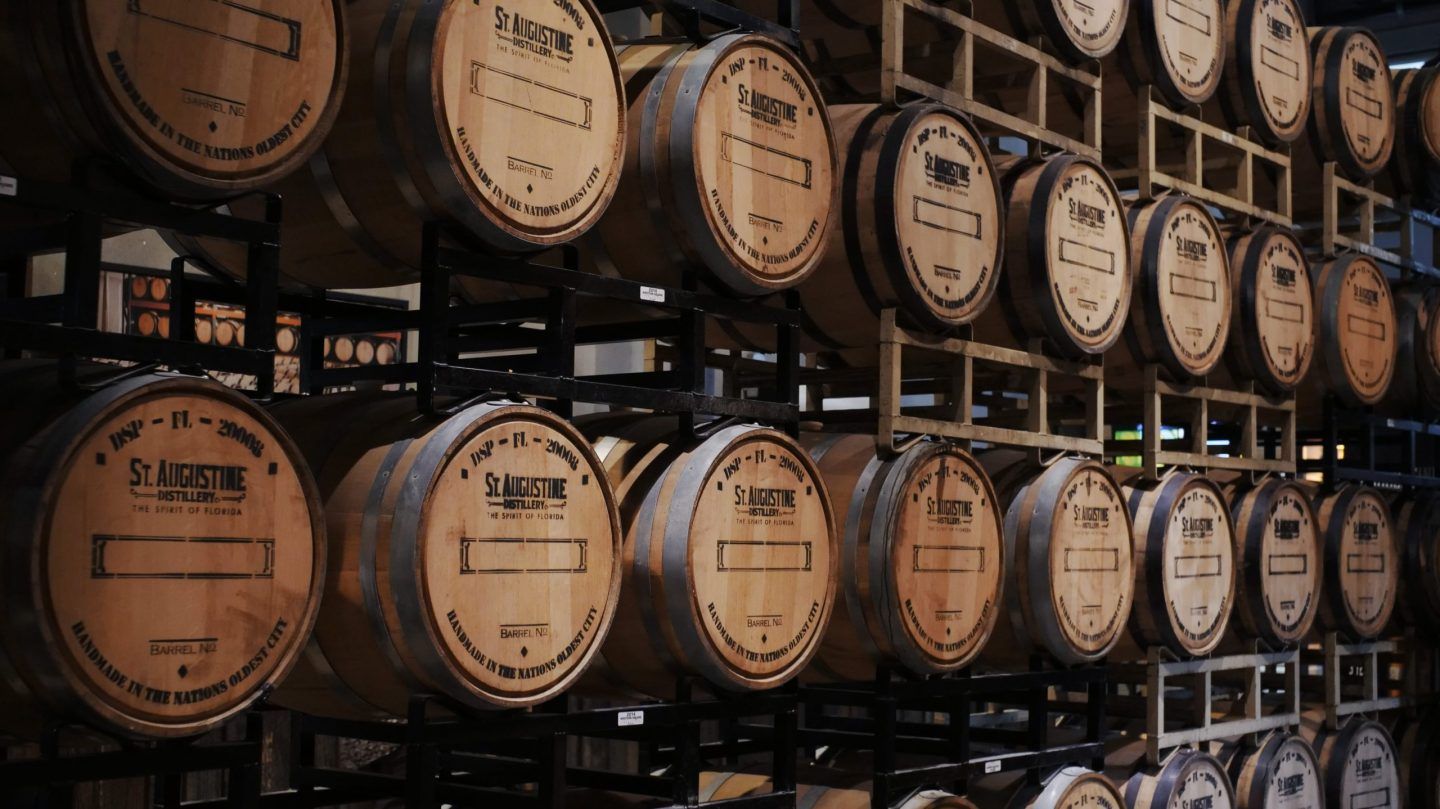
Welcome
Create your free Unicorn account to bid in our legendary weekly auctions.
By continuing, you agree to the Unicorn Terms of Use, Privacy Policy, Conditions of Sale, and to receive marketing and transactional SMS messages.
Already have an account?

Let’s get you approved to bid
To place your first bid, you’ll need to get approved to bid by confirming your mailing address and adding a payment method
The 4-Minute Guide To . . . Small Barrels
When it comes to whiskey maturation, size matters
Susannah Skiver Barton · Jul 25, 2023

Barrel aging is one of the few universal traits of all whiskies, and while some styles, like scotch, specify a maximum cask size, no major style of whiskey has a minimum size limit. In the U.S., the standard-size barrel is 53 gallons (or “53s” in industry parlance). But smaller barrels—10, 15, 30 gallons—have come into vogue with the rise of craft distilling over the past 20 years.
There’s a lot to know about these little barrels that can help you make better decisions at the bar or shop. Let’s take a look.
Why does anyone use small barrels?
The diminutive containers are seen as a way to expedite maturation by increasing the ratio of surface area to spirit volume. In other words, the whiskey gets more wood contact. But mainstream distillers (and many consumers) say small barrels yield very different flavors from the traditional 53—and that those flavors aren’t as good.
How typical barrel maturation works
For all that it’s crucial to the identity of whiskey, what happens to spirit when it meets wood isn’t fully understood. The two are in a continuous state of chemical reaction, impacted by numerous variables: climate, location, the type of wood and how it was handled prior to coopering, and much more.
But in simple terms, there are three main processes taking place:
- Extraction: The alcohol pulls color, flavor, and texture compounds out of the wood. At the beginning of maturation, most of what’s happening is extraction, especially in barrels that have been charred (as all bourbon and rye barrels are). The thick layer of caramelized wood imparts sweetness, tannin, and color onto the spirit in a matter of months.
- Subtraction: As the wood imparts itself on the alcohol, its natural pores allow various compounds to dissipate. This process starts at the same time as extraction, but goes on for years, leading into and building on the third process.
- Interaction: Over time, chemical reactions between the different components of wood and alcohol take place, enhanced and transformed by oxygen that slowly enters the barrel as liquid evaporates. This process takes the longest to begin and run (most of) its course, continuing on indefinitely until a distiller decides it’s time to bottle the whiskey.
The allure of small barrels
Increasing the spirit's contact with wood makes extraction more pronounced in a shorter period of time. And because its impact is readily apparent in the form of an appealing dark color and woody sweetness, distillers who lack the budget to wait years for their whiskey to mature in traditional barrels often turn to smaller sizes. In a 15-gallon barrel, whiskey can be “ready” with wood flavors and rich color in just a few months.
The trouble with small barrels
Accelerated extraction may be good for imparting elementary oak flavors on whiskey, but it can also go too far, too quickly. Many small-barrel detractors point to overly woody and tannic flavors as major flaws, compounded by a frequent lack of complexity due to the absence of interactive processes, which aren’t given enough time to occur.
Back in the late aughts, popular distiller Buffalo Trace ran its own experiment with small barrels, aging one of its standard mashbills in 5, 10, and 15-gallon barrels simultaneously. The company flatly declared the experiment a failure in 2012. According to master distiller Harlen Wheatley, “It’s as if they all bypassed a step in the aging process and just never gained that depth of flavor that we expect from our bourbons.”
So why use small barrels at all?
Cost. All that time whiskey spends aging is time the distiller has to store, monitor and manage it without making money. That’s not a problem for established companies, but startup producers can’t always afford to wait. Small barrels can give craft distillers a quicker path to income, though as their businesses grow and stabilize, many switch to 53s.
Try a tiny taste
Small barrel whiskey’s questionable reputation is often deserved: the worst examples taste like little more than raw alcohol flavored with wood splinters. Luckily, most of those examples are now history, as craft distillers have become more skilled in their maturation practices—and more leery of putting out subpar whiskey just to save time.
Is any small barrel whiskey worth drinking?
A few producers have made small-barrel flavors a signature part of their whiskey’s profile, with good results. In Tucson, Whiskey Del Bac largely uses 15 and 30-gallon barrels for its mesquite-smoked and unsmoked single malts. The vessels work well in the intensely dry climate of the Sonoran desert, yielding deep flavors that match the spirit’s inherent bold character.
Kings County Distillery in Brooklyn started out using barrels ranging from 5 to 30 gallons, and while most of the small sizes have been phased out, co-founder Colin Spoelman says the 30s, sourced from a specific cooperage, are key to its flagship bourbon’s flavor. “We get the notes I want and appreciate most, like vanilla, caramel, chocolate, molasses,” he says. Spoelman also attributes his distillery’s successful use of small barrels to its style of distillation, which focuses on flavor creation by making more precise cuts. “If you put better spirit into the barrel, you depend on the barrel a little less.”
So don’t write off all small barrel whiskey, but proceed with caution, and look for established, thoughtful distillers who understand how to wield small barrels effectively.

extendedBiddingModal.title
extendedBiddingModal.subtitle
extendedBiddingModal.paragraph1
extendedBiddingModal.paragraph2